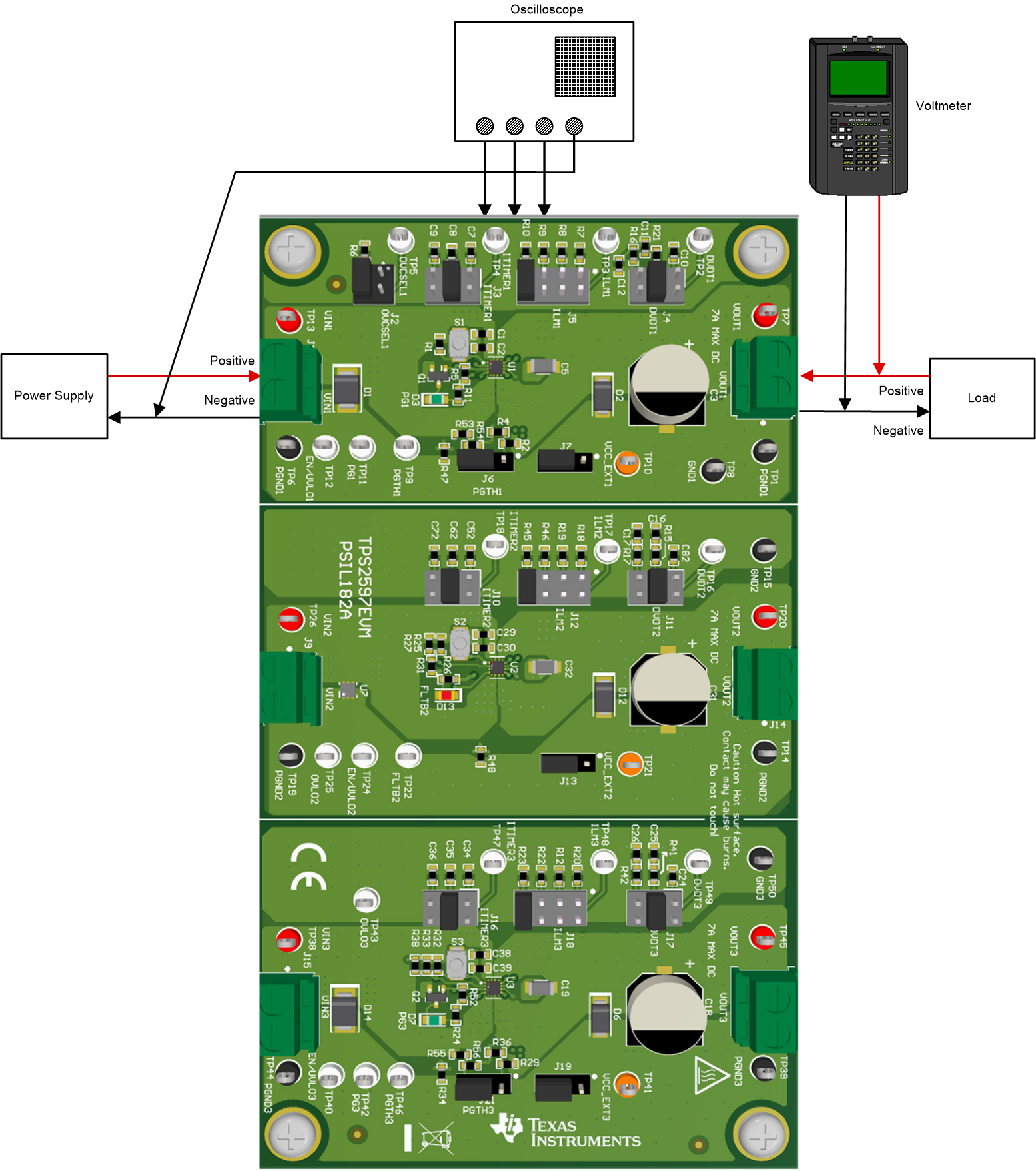SLVUCC0A October 2021 – December 2021 TPS2597
5 Test Setup and Procedures
In this user's guide, the test procedure is described for TPS25972A, TPS25974L, and TPS25970A devices. Following similar test steps, all other variants from TPS2597xx family can also be evaluated.
Make sure the evaluation board has default jumper settings as shown in Table 5-1.
Table 5-1 Default Jumper Setting for TPS2597EVM eFuse Evaluation Board
J3 | J4 | J5 | J2 | J6 | J7 | J10 | J13 | J11 | J12 | J18 | J17 | J16 | J19 | J21 |
|---|---|---|---|---|---|---|---|---|---|---|---|---|---|---|
3-4 | 7-8 | 3-4 | 3-4 | 2-3 | 2-3 | 3-4 | 2-3 | 3-4 | 7-8 | 7-8 | 3-4 | 3-4 | 2-3 | 2-3 |
 Figure 5-1 TPS2597EVM Setup With Test Equipment
Figure 5-1 TPS2597EVM Setup With Test EquipmentFollow these instructions before starting any test and repeat again before moving to the next test:
- Set the power supply output (VIN) to zero volts.
- Turn ON the power supply and set the power supply output (VIN) to 12 V, current limit = 10 A.
- Turn OFF the power supply.
- Set the jumper setting on EVM to default position as shown in Table 5-1.